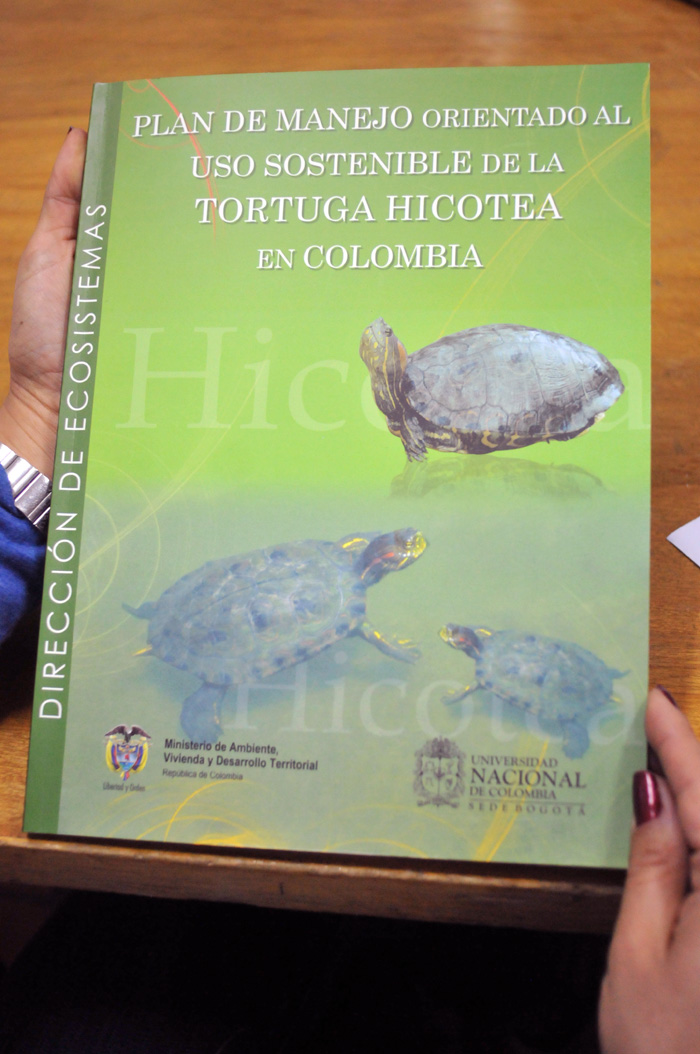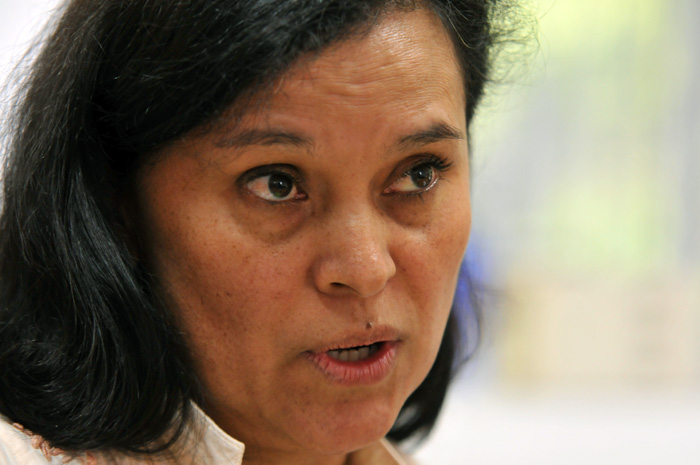This is a conclusion reached in a study performed by Universidad Nacional de Colombia and the Ministry of Environment and Sustainable Development (MADS for its acronym in Spanish), in which they established, in 2009, a management plan for the sustainable use of hicotea turtle in the country, as part of the National Strategic Plan for the Recuperation of Threaten Wild Species.
This plan was developed by the two institutions, "it is very different from others since, in the Ministry, there are many plans focused on the preservation, but not directly linked to sustainable use," asserted María Argenis Bonilla, Professor of the Biology Department at Universidad Nacional de Colombia.
Therefore, the University, as a strategic associate in the development of this plan and its strategic guidelines, and due to its experience in the topic, is a key factor for the continuity of the objectives and goals in favor of the sustainable use and preservation of these two species of hicotea turtles in their habitats.
This work aims at fighting against two situations that threaten the species. On the one hand, the population of turtles is affected due to their excessive extraction and the devastation of their habitat, which could lead to a threatening situation. According to Professor Bonilla "hicotea is one of the most affecter turtles due to illegal trafficking, especially during Easter when the extraction of adults and their eggs is high, since this is the season in which they lay their eggs. Besides, people think their meat is white, a situation that increases its consumption.
Hicoteas are hunted, especially, for their meat and eggs. Likewise, a big part of the species is commercialized for the pet market in big cities. In some region, their "shells are used as a component for mineral salts for cattle, since it is a big source of calcium," explained the interinstitutional document regarding extraction and commercialization.
According to data from CARS and the sub direction of the Ministry of Environment, in the period 1998-2009 a total of 104,507 specimens were confiscated. By 2009, hicotea reached a position as the most confiscated reptile in police operatives in the region of the Caribbean coast.
New agreement
In September of 2011 an agreement between Universidad Nacional de Colombia and the Ministry of Environment was signed, though the Faculty of science, which will be executed by the Research Group on Biology of Tropical Organisms, as phase II, in which the 2009 plan will be implemented.
The departments of the Colombian Carribean, including La Guajira, Chocó, Antioquia, South Santander and Bogotá are intervention areas for this process.
According to Bonilla, there are three important points in this new phase: first, "The training to the responsible authorities in the management of confiscations and in the knowledge of the species of wild turtles that live in the water and on the land." Among the responsible authorites we can find: Regional Autonomous Corporations, the National Police (Dijin, Dijin Interpol, Sijin, Environmental and Ecological Police.), National Parks, Ministry of Environment (in the affected regions such as Bogotá and Valle de Aburrá).
Secondly, "developing a model of the trafficking networks, in order to identify points where the gathering of turtles is made. Besides, identifying weak and strong points to advice the police, in order to dismantle these networks," mentioned the expert.
And finally, a third point is related to "the definitions of protocols for the study of the dynamics of the population and the ecology of reproduction of the individuals," concluded the Professor.
 Correo Electrónico
Correo Electrónico
 DNINFOA - SIA
DNINFOA - SIA
 Bibliotecas
Bibliotecas
 Convocatorias
Convocatorias
 Identidad UNAL
Identidad UNAL





